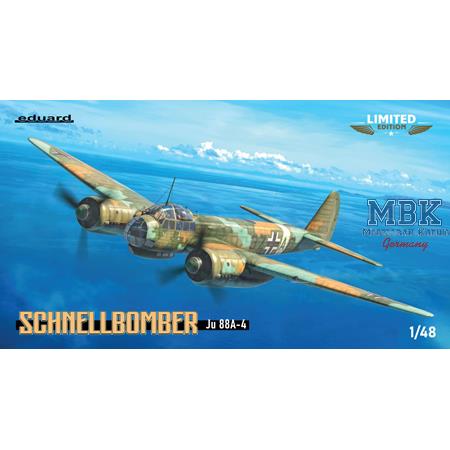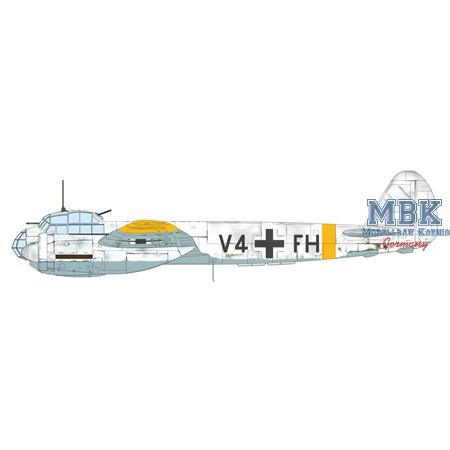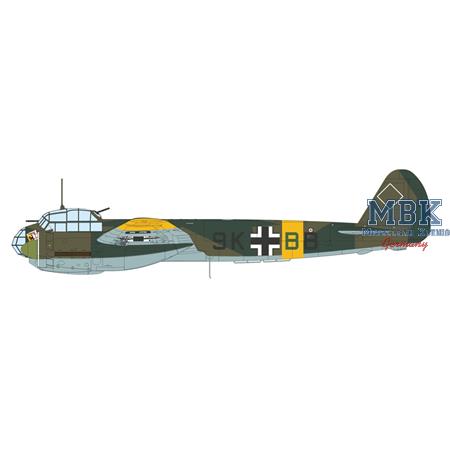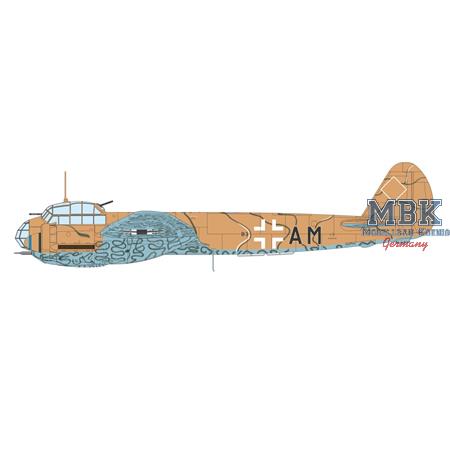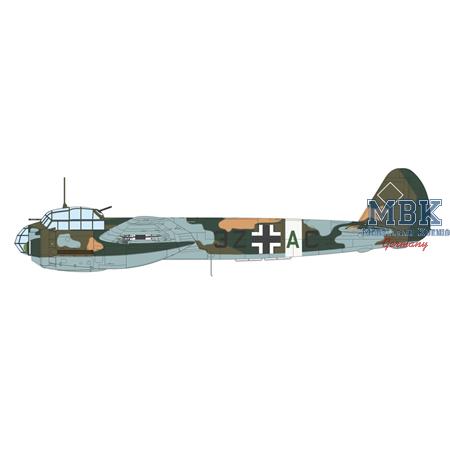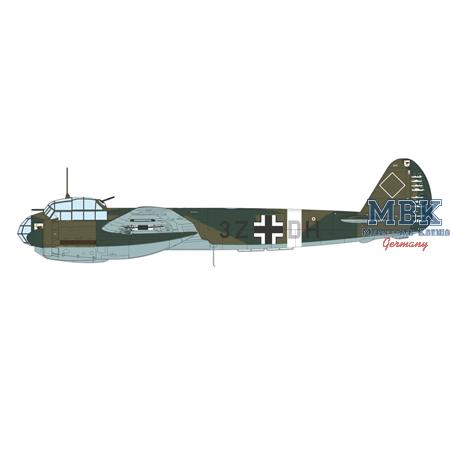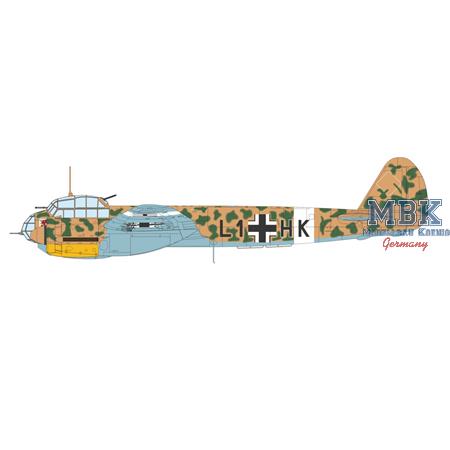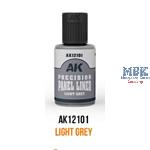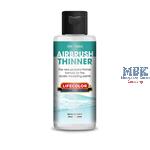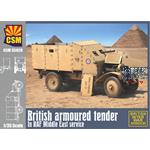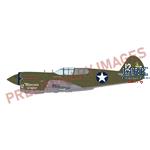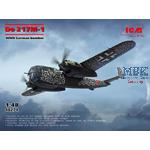Schnellbomber Junkers Ju 88 A-4 - Limited Edition
ED11194
EDUARD
1:48
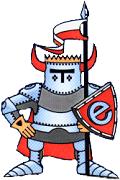
Kit is a German twin-engine, spine-wing multi-role aircraft with a classic tail and all-metal structure. The prototype flew on December 21, 1936, and it entered service in 1939. The first production series was powered by Jumo 211A engines. Thanks to its good flight characteristics, considerable performance, and solid construction based on the Ju-88, several different versions of the aircraft were created, each serving a different role. The first production version is the Ju-88A, with numerous revisions. It served as a medium bomber. Its three revisions were adapted for desert operations (A9, A10, and A11). Ju-88B aircraft, used as reconnaissance aircraft, were produced in small numbers. On the other hand, the Ju-88C, powered by BMW 801 engines, was produced in large numbers and was a formidable night fighter. The Ju-88-C6c version featured the SN-2 radar and Schrage music cannons. The D version is another reconnaissance version, but with new engines. Another development model is the famous Ju-88G, a night fighter with increasingly modern radars (SN2, SN3, FuG-218, and finally the FuG-240 in the Ju-88G-7C version) and more powerful engine versions. In addition, the following versions were created: Ju-88H, Ju-88p, Ju-88S, and Ju-88T. The aircraft saw extensive service on the Eastern Front and in combat with Allied bombing raids over German skies during the September Campaign, the war in Western Europe, and the Battle of Britain in 1940. Approximately 15,000 examples of this successful aircraft were built, in all versions. Technical specifications (Ju-88G): Length: 15.5 m, wingspan: 20.08 m, height: 5.07 m, maximum speed: 550 km/h, maximum range: 2500 km, maximum altitude: 9900 m, armament: permanent 4 MG151 cannons / 20 20 mm machine guns, 1-2 MG131 13 mm machine guns and 1-2 MG151 / 20 20 mm cannons in the Schräge Musik system.
Plastic parts: Eduard
Marking options: 6
Decals: Eduard
Photo-etched parts: yes, pre-painted
Paint mask: yes
The following decal variants are included:
1./KG 1, Kharkov-Voichenko, Soviet Union, January 1943
Capt. Klaus Häberlen, CO of Stab I./KG 51, Bagerovo, Soviet Union, April 1943
4./KG 54, Catania, Sicily, spring 1943
W.Nr. 140206, Capt. Heinrich Paepcke, CO of Stab II./KG 77, Gerbini, Italy, October 1942
W.Nr. 1016, Lt. Johannes Geismann, CO of 1./KG 77, Catania, Sicily, September 1942
Lt. Gerhard Brenner, CO of 1./LG 1, Eleusis, Greece, March 1942
Scale 1:48
Unbuilt / unpainted
Paint and glue not included
Write now your personal experience with this article and help others with their purchase decision.

























